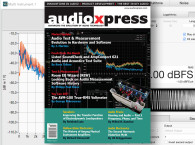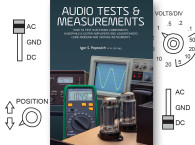
There is PC software that is used and there is PC software that is loved. There is very little in between, especially when it comes to engineering tools, which are in rare cases finished and polished pieces of technology.
Gaining a “love” status is only achieved by a small number of software projects. It is hard to say if Room EQ Wizard (REW) is loved by its users, but it has a strong user base, boasting 25,000 downloads every month, a lively forum, and several releases every year. To celebrate the 20th anniversary of REW, this article details its history and provides a glimpse of its future.
What Is REW?
If you have never heard of REW, it is an audio measurement suite that has its roots in EQ/filter parameter calculation and incorporates useful tools such as a Thiele-Small Parameter (TSP) calculator, real-time Fast Fourier Transform (FFT) analysis, a versatile signal generator, a room mode calculator, SPL meter and a measurement capture tool (Photo 1).
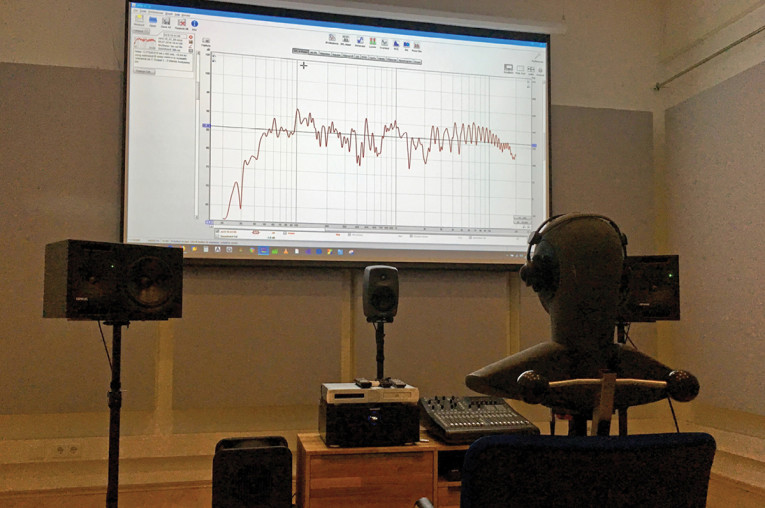
The most used measurement stimulus is an exponential logarithmic sweep. It leans, therefore, heavily on Angelo Farina’s work on the log sweep. The tool itself is free with a liberal end user license, but the source of about 330,000 lines of code is closed. The website roomeqwizard.com is a rare ode to bygone times on the web: no cookies, no e-mail addresses, accounts, or passwords needed.
The Backstory
REW started out as a side project for John Mulcahy, the most important and only person behind REW, who brought the first proof-of-concept pieces for the software together in 2003 at TAG McLaren Audio (TMA). Back then, TMA sold power amplifiers and AV receivers for home use (Photo 2). Some of these amplifiers integrated DSPs. The individual and proper adaptation of the DSP to the specific used environment, be it at home or the car, is an elaborate job, requiring highly specialized personnel and knowledge.

(Image courtesy of TAG McLaren)
To simplify that process, Mulcahy developed a filter parameter calculation tool in the spreadsheet application Borland Quattro Pro. Measurements were made with ETF 4.0 by Canadian software vendor ETF Acoustics. The calculated parameters were handed afterward to the DSP. The first shippable product was named TMREQ Wizard and assisted owners of the TMA AV receivers to set up their DSPs. REW users later paid tribute to Mulcahy for his work (Photo 3).
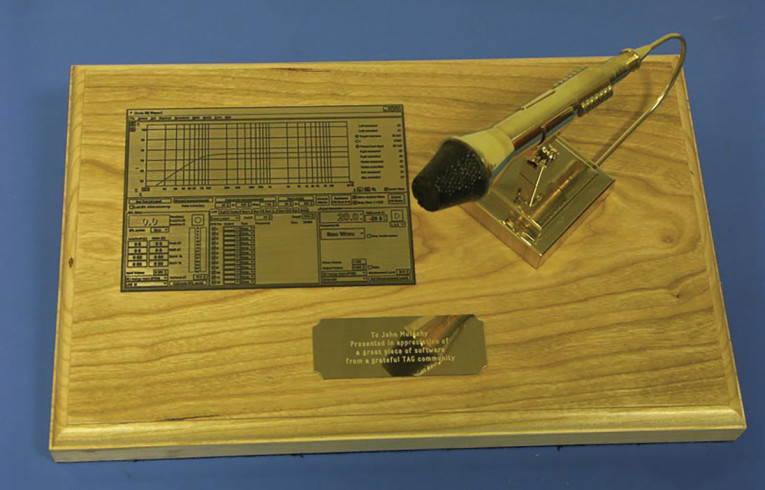
The name Room EQ Wizard stems from these roots — because it “magically“ calculated parameters — therefore solving hard acoustic problems and saving the engineers time. Mulcahy has said he regrets the choice of the very zeitgeist name a little today since it no longer reflects the true capability of the suite. But the name has established itself as a brand, so what shall you do? Most of the time the acronym REW is just used anyway.
Through small iterations, REW gained more and more features. In 2005 the exponential sine sweep was added (Figure 1), in 2007 a more measurement-oriented focus came, and the RTA function followed in 2008. As late as 2022 the first paid upgrade for synchronous multi-input capture came along, primarily targeted for automotive applications. But users are not forced to pay or upgrade to continue to use REW. In 2018, Mulcahy retired from his full-time day job as principal engineering lead and continues to invest his energy into REW.
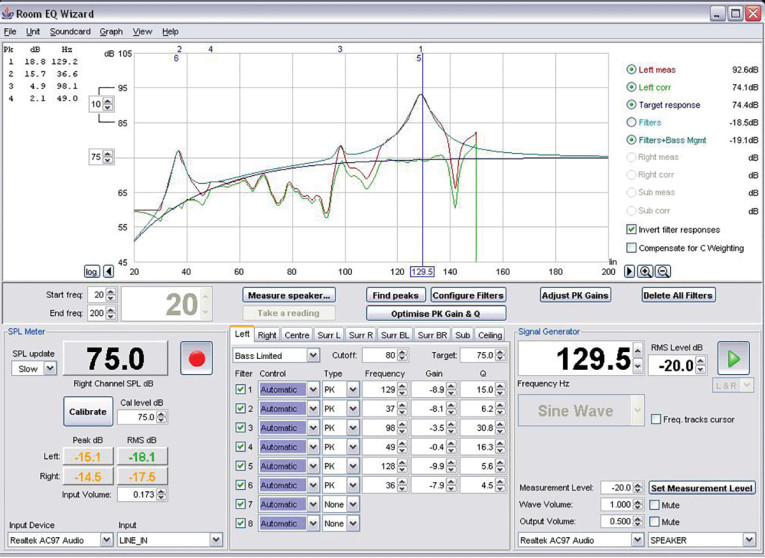
Special User Interface
A strong characteristic of REW is that all the offered tools in the suite work together in a very subtle, but useful way. For example, the room mode calculator can hand data to the main analysis window, allowing to check if the calculated room modes align with measurements. Or the RTA can exchange data with the main analysis window, allowing devices under test (DUT) to be checked with several different stimuli. Although this system of exchange is a little hard to grasp for beginners, it is very useful in production mode, since presented challenges can be quickly analyzed from different angles.
Some features are not visible in plain sight. As standard, REW works as a closed-loop measurement system. It generates and captures the stimulus from the DUT in one step. If that measurement technique cannot be used, open-loop measurements are possible: REW generates a measurement sweep into a file, that is then, for example, played back via the cloud or some digital kind of input. An open-loop REW system then detects its own stimuli and starts the measurement. An extremely useful technique for many devices being sold today.
Over the years, several pieces of hardware drivers were integrated. What started with the TMA AV receivers is now quite a list of supported hardware. For example, the loudspeaker manufacturer Dutch & Dutch relies solely on REW as a measurement and calibration tool. MiniDSP also relies on REW as a tool. The miniDSP measurement microphones and DSP are neatly integrated into the user interface, they can be hot-swapped plug-and-play and are recognized, selected, and calibrated automatically.
Architecture Decisions
Two major decisions turned out to be very impactful on the later path of REW. The first one was to incorporate JAVA as code framework. It seems now that the euphoric JAVA days are over, where JAVA applications and developers seemed to be everywhere. But JAVA’s performance on modern systems is better than ever. Proper JAVA implementations are only slightly slower than C/C++, and not so far behind more modern programming languages such as RUST. A development that was hard to foresee in the early 2000s, where JAVA was plagued with performance issues, security bugs, a lack of libraries (e.g., for smoothing curves or calculating FFTs) and where the cross-platform approach was joked about with “write once, debug everywhere.“ Microsoft Windows seemed to be unbeatable in the operating systems market — so why take the time to build a cross-platform application? Time has proven these statements obsolete.
Audio drivers were also not up to par back in the early 2000s and brought Mulcahy some headaches. But this improved a lot through ASIO, Core Audio, and ALSA. The operating system agnostic approach of JAVA seems today to be very relevant, with an operating systems landscape more scattered than ever. REW users can choose between Windows, macOS, and Linux operating systems. Unfortunately, a mobile build for iOS variants and Android is missing and doesn’t seem to be planned.
The second major decision was to rely on off-the-shelf sound cards and external audio interfaces for data acquisition. This was quite unusual for measurement equipment at the time, since “proper” Class 1 measurement equipment facilitated usually a “hardware first“ approach. The hardware was the product being sold, not the software. The software was a necessary enabler for the hardware. If you have ever used and invested in an oscilloscope by Rohde & Schwarz, an Audio Precision audio analyzer, or a heads-and-torso simulator by HEAD acoustics, you know how important and valuable an integrated audio development tool is (especially during deadline-driven heated arguments) where software and hardware come from the same vendor. By being a free and software-defined system tool, it was for a long time scorned by professionals, arguing against it with narratives like “what is free does not have a worth,“ And I still hear that argument to this day, often followed by “this measurement is not calibrated.” One just must understand what it actually is that is being measured.
Amateurs and educators embraced REW wholeheartedly probably due to the unbeatable price point. The limitations of this software solution have since been understood and calibrated against. Many robustness measures are included in REW, for example, the stabilization in the impedance measurement and several checks in the capture tool. In the real world of audio development, in many cases, an absolute reference measurement is nice to have, but not necessary. The relative relation is most often enough to decide about the future path to take.
Within the last 20 years, audio interfaces have improved a lot. Signal-to-noise ratio increased, voltage immunity/stability improved, and some audio interfaces even allow for DC-coupling — enabling even better measurement possibilities with audio interfaces. It seems the direction “third-party hardware” is now embraced by audio development tool makers, hopefully resulting in a future with more good audio products from which engineers can choose — ultimately leading to better products. REW democratized so to speak audio measurement tooling. And this has changed pro audio tool developers too. Some gave up the audio analyzer business completely, while others looked for niches in calibration and quality control. It is hard to say if this is solely REW‘s fault but it surely played a role here. Integrated measurement solutions still have their sensible space, but the measurement place overall is changing a lot.
The Learning Curve
It seems nowadays, it is a good thing to offer a tool with a steep learning curve... REW has a steep learning curve. I felt really intimidated the first time I used it. A colleague of mine introduced REW to me when we were tasked with building a reference listening room and had to evaluate the work of a contractor.
His initial comment was something like: “…at first it feels like a new programming language: many new terms and error messages everywhere… “. What we heard seemed odd to us, so we tried to measure it with several tools and one of them was REW. To be honest, in the process we both had to learn a lot because there were so many options and some terms we had never heard. Our analysis took us a few days to complete.
Somehow, I was intrigued by REW and was eager to learn more. The light installer of just 30MB indicated a tight and disciplined body of development. My listening space at home needed some optimization and I could not really use the tools I used at work. So, I dived into the manual and was surprised to find it a very useful text with many useful literature recommendations. Chapter by chapter I worked through it. Thankfully, novice users nowadays can rely on the many tutorials on YouTube and a good selection of step-by-step instructions guiding through the first days with REW. Although REW is not targeted explicitly toward audio professionals and tries to include hobbyists and amateurs, a lot of previous knowledge is necessary to extract meaningful information and decision making from the measurements. Mulcahy is aware of this and works on a concept to strip the user interface for the task at hand. For example, if you want to make an acoustic measurement of an audio system in a room with one microphone, you will only see the options and panels needed. This should help in optimizing the workflow and avoiding the analysis paralysis.
It must not always be rooms and speakers... REW can also be used for analyzing the impulse response and radiation patterns of musical instruments (Figure 2). Since I became familiar with REW, I have also used it to measure many things — kitchen machines, headphones, electronics devices, and many cars (Figure 3).
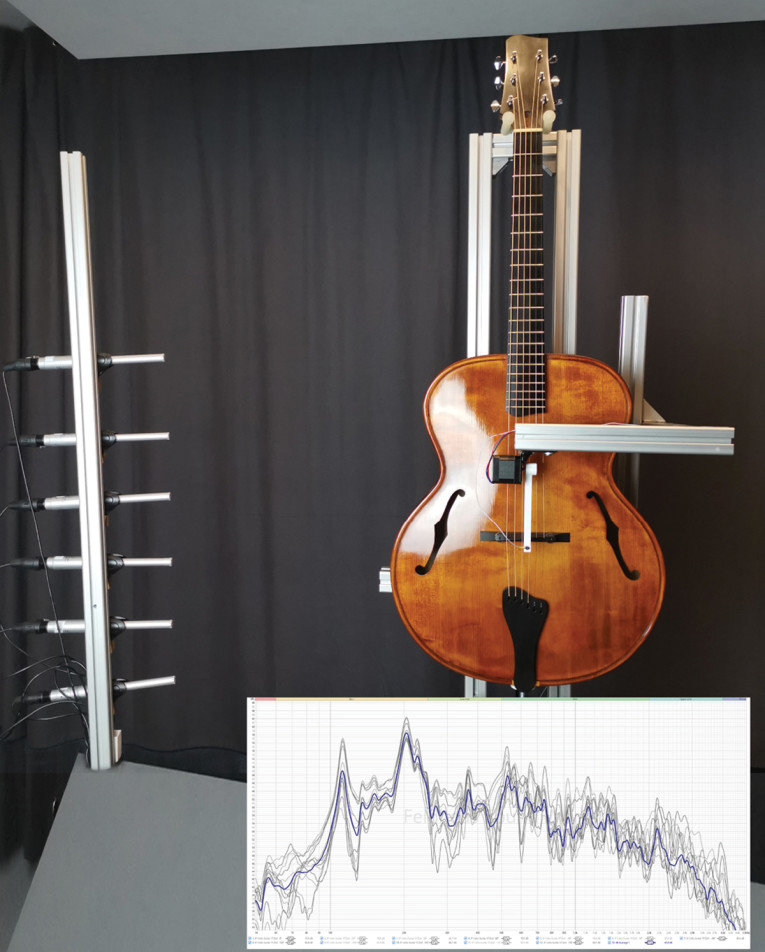
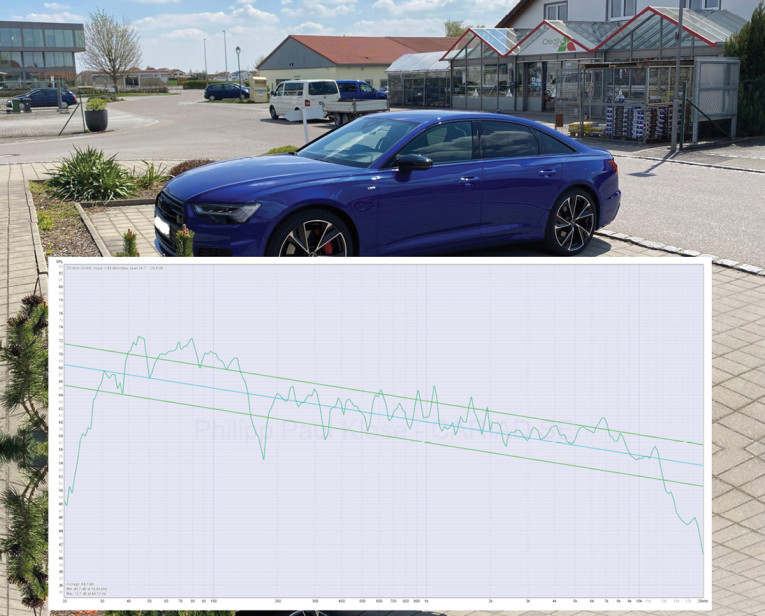
What Is Coming Next?
REW is a tool that is growing iteratively — new features are added to it on a constant basis (Figure 4). Mulcahy’s backlog with feature requests holds more than 500 entries. To my regret, that list is undisclosed. Feature requests can be sent directly to Mulcahy or handed in via the REW AV Nirvana forum and are quickly answered.
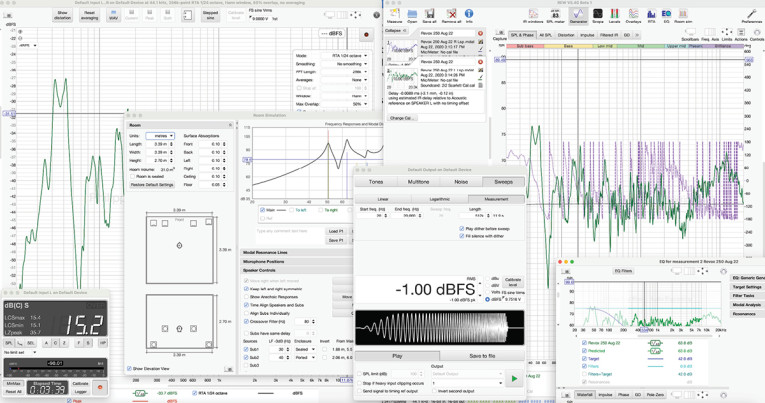
But what can we expect to come next? To make REW more accessible, the upcoming user interface stripping preset feature has already been discussed. A speech transmission index (STI) option would probably make a lot of users happy. Personally, I wish for the integration of psychoacoustic measurements.
Within the Beta build, an API for external control and test automation has been spotted. This could make REW interesting for a new group of users and applications, making it an invisible audio measurement machine.
Recently, a new high precision frequency estimation tool sneaked in... A precursor for an upcoming wow and flutter measurement tool, maybe? We will see.
The Future of REW
I had the opportunity to ask John Mulcahy (Photo 4) a few questions about his motivation to continue the work on REW.
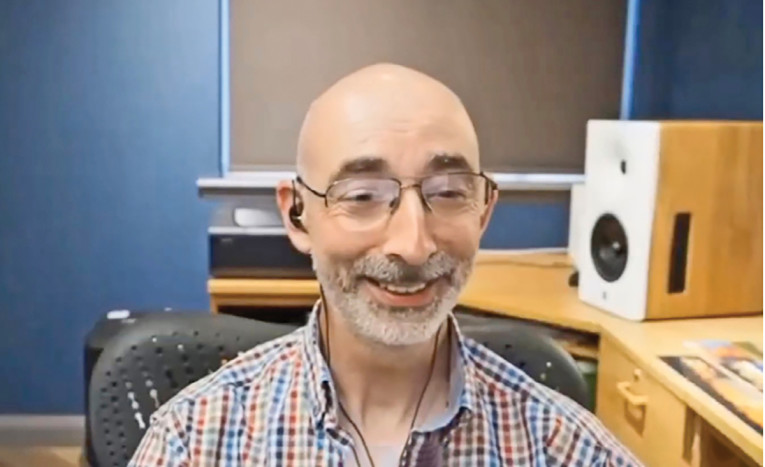
Philip Paul Klose: Is there a goal you want to reach?
John Mulcahy: It’s my hobby and preferable to Sudoku as a way of warding off senility. I’m an engineer, I like to work on things that help solve problems. Acoustics became an area of interest by way of HiFi in the 1980s. REW is part tool, part vehicle for exploring topics of interest.
Klose: REW is for the most part free, what is your motivation here?
Mulcahy: I initially made it free as I was in full-time employment and couldn’t spare the time to support a product in the way I felt paying customers would deserve. I also like the idea of people having access to tools that help them understand their listening environment without the hurdle of having to pay.
Klose: What was your biggest learning curve in the development of REW? Would you do something different today?
Mulcahy: Nothing springs to mind beyond the obvious for any software project: things take much, much longer than you think they will. I chose Java for REW as I fancied learning an object-oriented language. I might choose something else if I were starting again, but I don’t regret the choice at all.
Klose: You are the only one working on the code, don’t you wish for a helping hand from time to time?
Mulcahy: Not really. I recognize features could be added more quickly with others contributing, but the prospect of refactoring and documenting the code to make it practical for others to add to it is not appealing. Nor is the thought of public scrutiny of my 20-year compendium of coding anti-patterns and bad practice. I like being able to take the project where I want, when I want, and not having to spend time reviewing or integrating other peoples’ code. I’ll make sure the code becomes open source eventually, but I’ve been coding for 45 years now, and I don’t see myself stopping anytime soon.
Resources
A. Farina, “Simultaneous measurement of impulse response and distortion with a swept-sine technique,” 108th Audio Engineering Society (AES) Convention, February 2000.
Help forum and beta releases, AV Nirvana,
www.avnirvana.com/forums/official-rew-room-eq-wizard-support-forum.10
G. Nicoletti, “Measuring Acoustic Guitars,” Iulius Guitars,
www.iuliusguitars.com/measuring-acoustic-guitars
REW Installer and Manual, roomeqwizard.com
E. Winer, “You Can DIY! An Introduction to Measuring Rooms,” audioXpress, August 2021.
This article was originally published in audioXpress, March 2024



